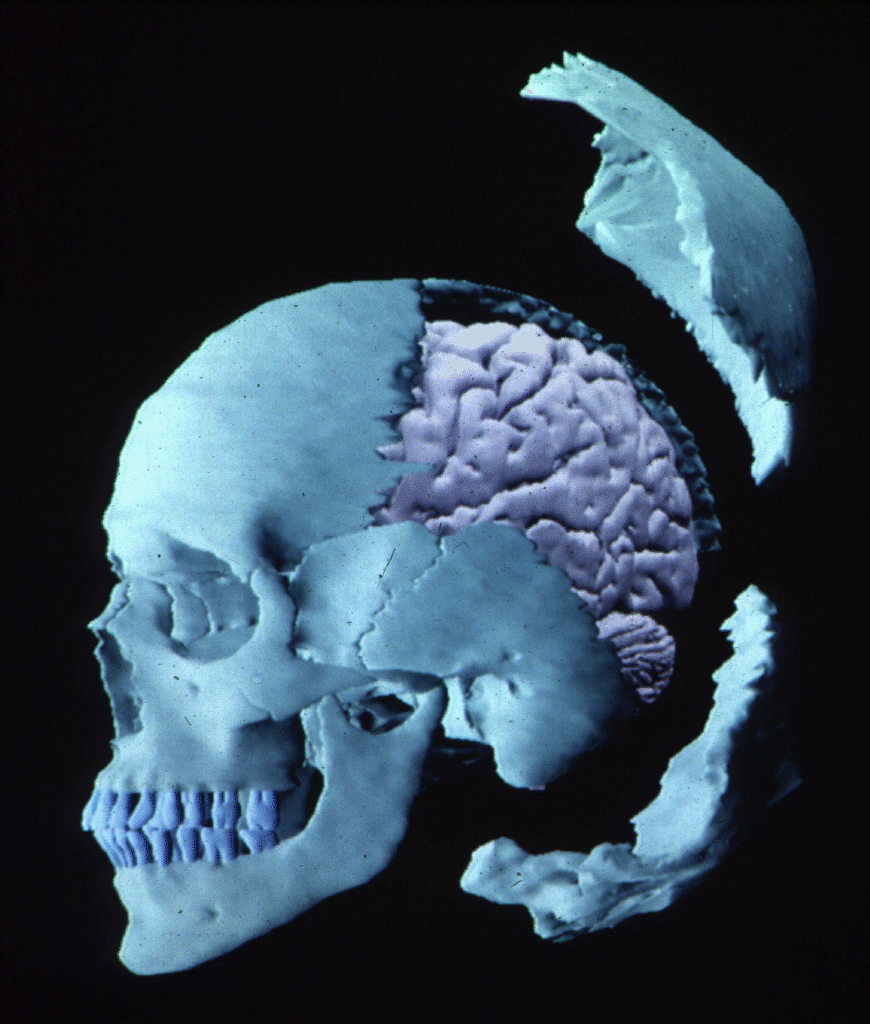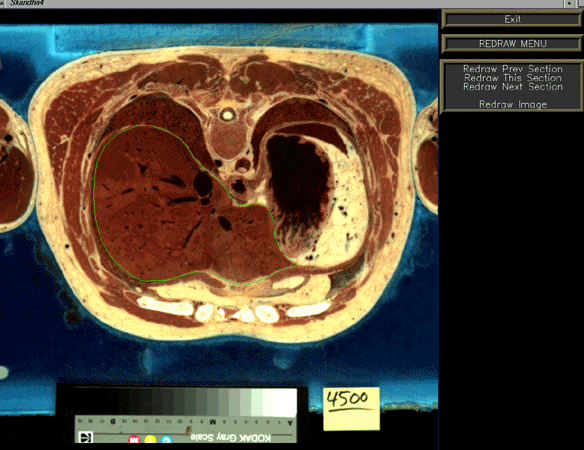
Reconstruction From Serial Sections
A common approach to extracting a 3-D object from medical image data is to draw the cross-section of the object on each of a series of parellel (or serial) image slices, then to "loft" or "tile" a surface over the adjacent contours.
Many attempts have been made to automate both the drawing of cross-sections on each image, and the tiling of a surface between adjacent cross-sections. However, no completely automatic method has been found for either of these problems. As in many other groups, we have therefore fallen back on manual methods to deal with these problems in our production tools, and have explored various alternatives in our development tools.
We have built many iterations of a program called Morpho, to allow manual contouring of objects on serial sections. Most of these were created by Jeff Prothero. A NeXT version was created by Teresa Lassek for her CS master's thesis.
For example, this figure is a screen capture of one version of the Morpho program, which runs in the Skandha4 software environment:

The mopho program creates a set of contours representing the cross-sections of an object on parallel image sections:
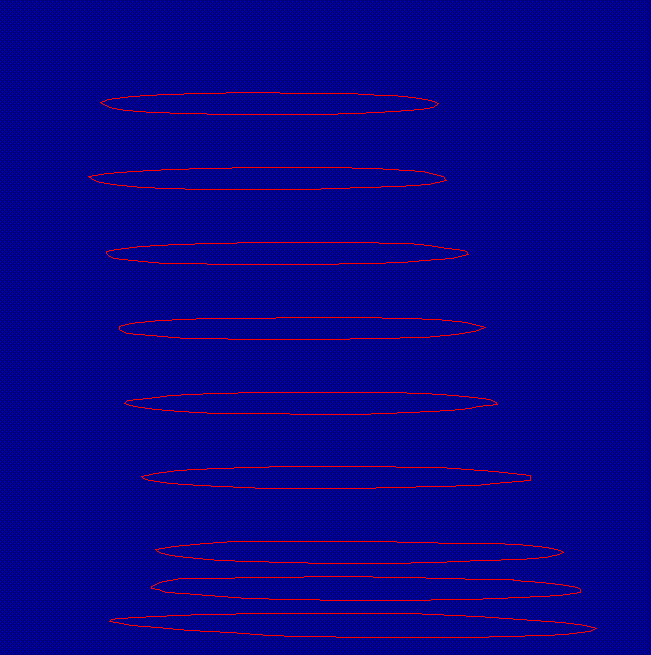
Given this set the next problem is to tile a surface on these contours:
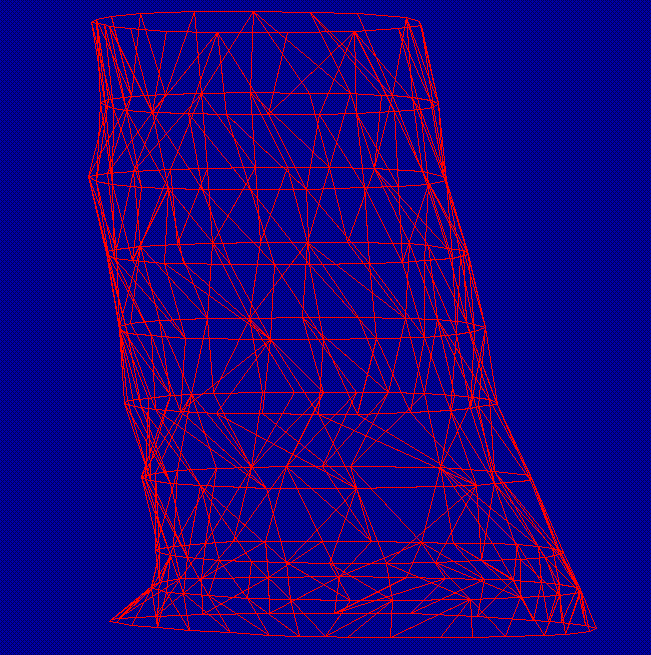
Jeff Prothero developed a semi-automatic method for tiling, which can be corrected if the computer connects the wrong points on adjacent contours. However, this method contains no provision for dealing with branching structures, or for those which appear as two separate contours on the same slice. David Myers, in his CS Ph.D thesis, used our data to look at the problem of automatic tiling of branching structures. However, much more work is needed in this area.
Once the individual structures have been tiled they can be combined into a display list and visualized, either as a wire-frame:
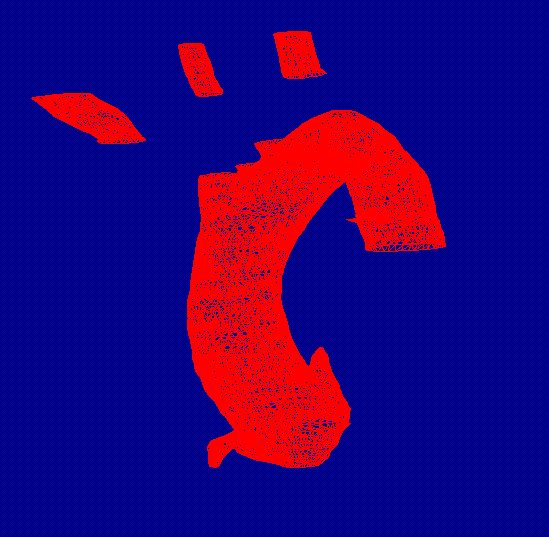
or as a shaded rendering:
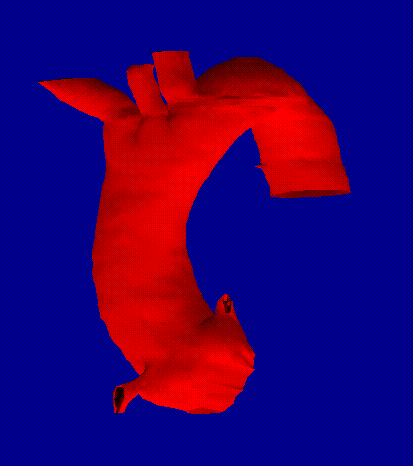
The Skandha3 [Prothero1989] and Skandha4 programs, developed by Jeff Prothero, allow interactive manipulation of the display lists, and the creation of animation scripts that are used to the generate Quicktime movies that are available on our CD-ROMS.
Very detailed movies and static renderings can be made with these tools:
